Current as of: October 1, 2025 - 19:11

Highlights of Madagascar Trip Notes
- Ways to Travel: Guided Group
- Destination: Madagascar
- Programmes: Wildlife
-
Activity Level:
3 out of 7 - Moderate
- 14 Days: Land Only
- Ages: 16+
- Trip Code: WZIA3
- Carbon Footprint: 37kg CO2e
Trip Overview
Discover an island nation like no other, joining expert trackers in search of unique wildlife and unforgettable adventures
Cut off from mainland Africa, Madagascar is a dream come true for intrepid explorers. Understandably, the wildlife is the main draw (much of it found nowhere else on Earth) and it’s the animals, and particularly lemurs, that take centre stage on this trip. Accompanied by experienced local trackers, we visit Andasibe in search of the indri, the largest lemur, and the cloud forest of Ranomafana National Park to look for rare golden and greater bamboo lemurs. We also search for ring-tailed lemurs in Anja Reserve and have a final day wildlife-watching in Tsimanampetsotsa National Park.
At a Glance
- Accommodation: 13 Classic nights (hotels)
- Travel by private bus, boat and internal flight
- Group normally 4 to 16, plus leader. Minimum age: 16
Highlights
- Discover the best of Madagascar, one of the world’s great wildlife-watching destinations
- Team up with skilled local trackers for unforgettable encounters with wild lemurs
- Marvel at the amazing rock formations, spectacular canyons and natural swimming holes of Isalo National Park
- Discover the otherworldly spiny forest of Tsimanampetsotsa National Park
- Unwind with beach time in Anakao and a gentle walk along the white sands of Nosy Ve island
Is This Trip for You?
This trip is rated Activity Level 3 (Moderate) with a Wildlife Rating of Three. For more information on our trip gradings please visit the Activity Level Guidelines page or our Wildlife Holidays page for more on our Wildlife Ratings. If you have any queries about the difficulty of the trip please do not hesitate to contact us.
Madagascar is a rewarding destination with a wealth of flora and fauna; however, before you decide to travel, we would like to highlight the following issues for you to consider:
- Madagascar is one of the poorest countries in the world and the infrastructure reflects this.
- Travelling by vehicle in Madagascar can be uncomfortable as road conditions are far worse than in Europe and North America. You should expect many narrow, winding and uneven sections of road. Roads away from the population centers and main routes are generally unpaved dirt roads which can be very bumpy.
- We do have some longer drives but the diverse scenery more than makes up for time spent on the bus. We break up our road journeys with stops at villages to take photos and stretch our legs.
- There will be a lot of very early starts and long days on this itinerary.
- For the best wildlife viewing opportunities there will be some early starts and tracking the wildlife can involve walking through difficult terrain at a quick pace.
- Parts of Madagascar are mountainous. You need to be prepared to walk in hills for up to four hours. The trails are fairly gentle in Andasibe but steeper in all the other national parks.
- The tourist infrastructure in Madagascar is new and some services are limited. It is not unusual for there to be changes to accommodation or internal flights and for this reason the order of the itinerary (but not the content) may sometimes change. However, what tourism does exist is of a good standard and you may be impressed by the level of service in some of the places we stay.
- Our boat transfer to Anakao involves a beach landing and walking through some water that might may be difficult if you have limited agility.
This itinerary includes the use of pontoon ferries, which do not (typically) offer emergency safety equipment such as flotation devices. We have risk assessed these crossings and find them to be low risk. However, if you are concerned about this aspect, please consider an alternative trip as we are unable to facilitate the provision of Western safety equipment.
Water safety: This trip includes time by a lake, river or sea, where there may be opportunities to swim. You should always seek local advice before deciding whether to swim. Open-water or wild swim spots should be treated with extreme caution. Information on how to keep yourself safe while swimming is shown here.
Adult min age: 16
Min group size: 4
Max group size: 16
Itinerary

Land Only
- Start City: Antananarivo
- End City: Antananarivo
Land Only Itinerary
Our adventure starts in Antananarivo, the picturesque capital of Madagascar, which is often shortened to Tana. There will be a group meeting and briefing in the evening followed by an optional group dinner for those who would like to join.
Accommodation: Hotel Belvedere (or similar)
This morning, we embark on a two-hour city tour of the capital. With busy markets, friendly people and an ancient town on a hill with freestone churches and ancient royal places, it is a magnificent place to explore. We then drive 88mi/142km (five hours) to Andasibe through the green vegetation of the east. This first stop brings us to the humid part of the country with many primary forests and lakes. Along the way, we see Merina villages in the rocky mountains.
In the afternoon, we have a two-hour visit to Vondron’olona Miaro Mitia Ala Reserve, a community-run reserve where we can see several species of lemurs and birds. The reserve is an untouched paradise for endemic animals and plants. Diademed sifakas jump in the treetops and groups of playful indris can be spotted with their unmistakable sound. For reptiles and amphibian lovers, the reserve is home to countless frogs along the crystal-clear river and several amazing chameleons live in the forest.
In the early evening, we take a twilight/nocturnal walk along the road, close to the Andasibe Nature Reserve, looking for the nocturnal species of lemur as the torchlights pass their eyes.
Accommodation: Hotel Feon’ny Ala (or similar)
Discover Andasibe National Park (also known as Perinet) and its wildlife on a three-hour walk. Expert trackers work with our leader to provide the best opportunities for wildlife viewing. The park is home to the teddy bear-like indri, the largest of the lemur species in Madagascar, as well as other flora and fauna and a wide array of birdlife. Listening to the piercing yet melancholy cry of the indri in the morning is an evocative sound and for those who are prepared to follow them through the thick rainforest, the reward is often a close-up view of these beautiful creatures. A group of five diademed sifaka has recently been reintroduced to Andasibe from Mantadia; if we are lucky, we may spot one of these unusual creatures.
This afternoon we drive 88mi/142kms back to Antananarivo, a journey of around four to five hours.
Accommodation: Hotel Belvedere (or similar)
We head south to Antsirabe, across the highland landscape of beautiful rice fields. The spectacular eroded hills called lavaka remind us of the Far East with rice fields and a green landscape or vegetables and fruit trees.
Antsirabe, or the Place of Salt, is a city known as the centre of the beer industry. Founded by Norwegians in 1856, it is the only place in Madagascar that really feels and looks like a European city. It has a temperate climate and all fruits and vegetable that grow in cold climates are found here. Total drive time is 105mi/170km and should last about five hours.
Accommodation: Les Chambres du Voyageur (or similar)
After breakfast, we drive for approximately 12 hours to Ambositra, the centre of the wood-carving industry in Madagascar. We are still in the highlands, where the houses are decorated with ornately carved wooden balconies and brightly coloured shutters. Further on we pass le col de tapia, a type of tree resistant to the bush fires of the area. The landscape is still dominated by rice fields, pine forests and eucalyptus trees, and rocky mountains. Our destination for the day is Ranomafana National Park, and the drive is 155mi/250km (nine hours.)
Accommodation: Centrest Hotel (or similar)
Parc National de Ranomafana, with rainforest hills and abundant wildlife, has long been considered one of the highlights in Madagascar, and is one of the most heavily visited national parks here. The entrance is about 4mi (7km) from Ranomafana village, while altitudes in the park range from 2,625ft to 3,940ft (800m to 1,200m). In addition to densely forested hills, the terrain here is characterised by numerous small streams, which plummet down to the beautiful Namorona River. Although much of the region has been logged, the easternmost part of the park retains relatively large areas of primary forest.
We walk in the park for approximately six hours looking for lemurs, chameleons and other animals. As we track the wildlife for the best viewing opportunities, the walk has the potential to be challenging if we need to walk at a quick pace through the forest. We hope to see golden bamboo lemurs, which are unique to this park, plus other lemurs such as eastern woolly lemurs, red-bellied lemurs, grey bamboo lemurs, and red-fronted brown lemurs. This park is also home to other mammals including tenrecs, bats and carnivores such as mongooses and the Malagasy striped civets.
Accommodation: Centrest Hotel (or similar)
Day 6 – Full day in Ranomafana National Park = 5 to 6 hours hike
We have an early start as we leave Ranomafana National Park. The scenery changes dramatically as we head to the small town of Ranohira, a journey of approximately 211mi/340km (ten hours). We stop near Ambalavao to visit Anja National Park along the way, a small reserve where several families of ring-tailed lemurs can be seen among the vegetation.
Accommodation: Orchidee de l’Isalo (or similar)
After an early start, we spend our day exploring Isalo National Park, a vast region of wind-polished and water-scoured rock towers, deep canyons, gorges and oases often described as Eden. If the conditions are right, we walk in the magnificent Canyon des Makis in search of cheeky ring-tailed lemurs and the Verreaux’s sifaka. We also visit the Piscine Naturelle (Natural Swimming Pool), a beautifully lush spot in such an arid landscape where we can swim and relax. The combination of coloured rock formations, strange plants and enveloping silence make this one of the most captivating places in Madagascar.
Accommodation: Orchidee de l’Isalo (or similar)
Day 8 – Full-day trek in Isalo National Park visiting Monkey Canyon and natural swimming pools = 6 – 7 hours
After breakfast, we continue to Tulear. This brings us new scenery, among the dry forests of the west and the spiny desert of the south. On the way, admire the different Mahafaly tombs and the Antandroy tombs from the road and visit Zombitse National Park for a few hours. This drive is about 149mi/268km (seven hours). The Zombitse National Park forest is of particular interest to birdwatchers, as it is home to one of Madagascar’s rarest endemics, Appert’s greenbul, as well as other species such as giant coua, crested ibis and cuckoo roller. Verreaux’s sifakas, red-fronted brown lemurs and sportive lemurs are also seen here.
Accommodation: Hotel Victory (or similar)
This morning, we take a boat transfer to Anakao arriving at around 9am. The boat transfer takes approximately 1 hour. This Vezo (meaning the people who fish) fishing village lies on the southwest coast of Madagascar and has white-sand beaches. The rest of the day is free for optional activities, including snorkelling, diving, pirogue (a small boat similar to a canoe) excursions, swimming and more.
Accommodation: : Prince Anakao (or similar)
An early 4×4 transfer (approximately two hours) takes us to Tsimanampetsotsa for a full day in the national park. A large, shallow soda lake is the standout feature here, while a large limestone plateau has some of the most striking spiny forest vegetation in Madagascar with countless endemic species. The park sits on a large underground aquifer that runs north, evidenced by numerous sinkholes and caves. The lake is renowned for its waterfowl, notably flamingos and other rare endemic birds including the Madagascar plover. We may even be lucky and spot the emblem of the park, the very rare Grandidier’s mongoose. In the late afternoon, we return to Anakao.
Accommodation: : Prince Anakao (or similar)
Day 11 – Full day in Tsimanampetsotsa National Park = 4-5 hours visit
Today, we take a boat excursion to the small island of Nosy Ve to see red-tailed tropic birds (white seabirds with red bills and long, thin, red tails). If we are lucky, we may see the females roosting under small shrubs, well hidden from airborne predators such as hawks or eagles. A stroll around the shoreline, including a long white-sand beach, takes about one hour. After our three-hour exploration, we return to Anakao, usually around lunchtime. The rest of the afternoon is free for optional activities.
Accommodation: : Prince Anakao (or similar)
Today, we transfer to Tulear airport for our flight to Antananarivo. Depending on the flight schedule, you may have free time in the afternoon to explore Tana on your own.
Accommodation: Belvedere Hotel (or similar)
Day 13 – Fly to Antananarivo = 2 hours flight
This morning we visit Ambohimanga, the fortified village and its royal palace for one hour. Ambohimanga, otherwise known as Blue Hills, was for a long time forbidden to Europeans. The kings and queens returned to this hilltop village for rest and relaxation. From here began the line of kings and queens who united Madagascar into one country. Ambohimanga remains spiritually significant for the Malagasy people with ceremonies and rituals still taking place. Our adventure ends after Ambohimanga, with a total of two hours driving expected.
Please note: Clients must not book flights leaving before 2.30pm.
Accommodation
Hotels
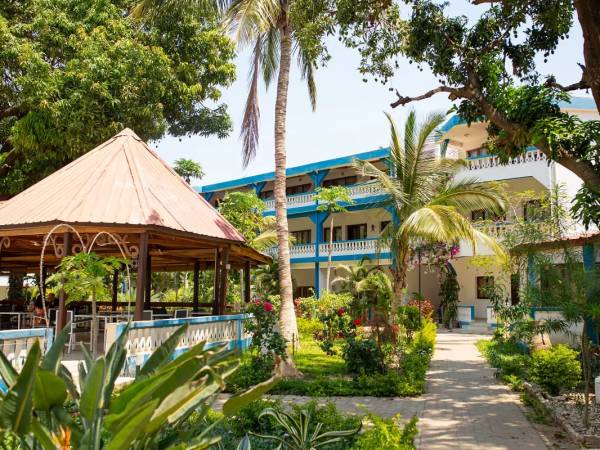
In Madagascar, we spend 13 nights in hotels, each well located for our activities and in beautiful settings. The daily itinerary has the accommodations normally used; below are a few example properties.
Antsirabe: Les Chambres du Voyageur (night 4)
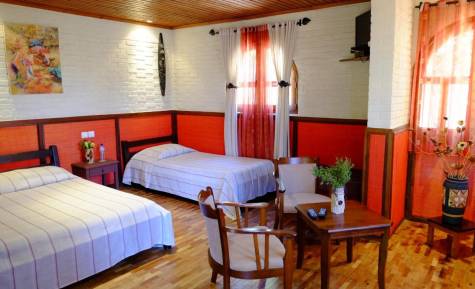
In Antsirabe, we stay at this husband and wife-owned hotel. They exhibit arts and crafts from the Zafimaniry ethnic group and there is a beautiful garden home to many endemic plants.
Ranomafana: Centrest Hotel (nights 5-6)
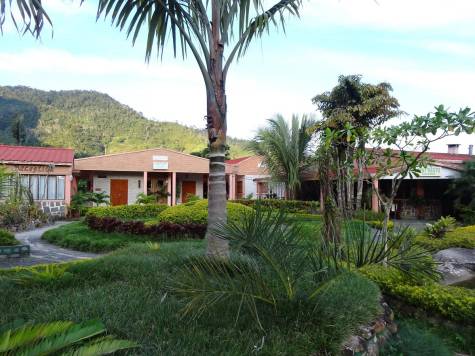
The Centrest Hotel is 10 minutes from the entrance to Ranomafana National Park and has enviable views of the park’s mountains and rainforest. The 18 spacious rooms are among the delightful gardens and there is an open-air restaurant and a bar to enjoy.
Anakao: Prince Anakao (nights 10-12)
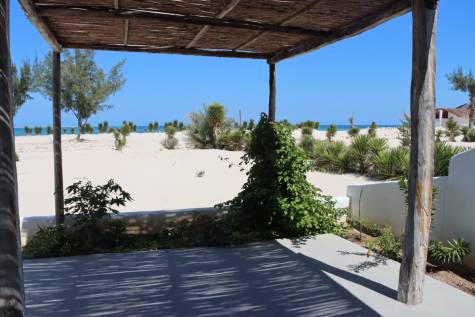
On a secluded beach, Prince Anakao offers privacy at the end of a thorough tour of Madagascar. Rooms are spacious and have uninterrupted views of the Indian Ocean. There are a number of water sports that can be booked if you don’t feel like relaxing on the white-sand beach, plus the hotel restaurant serves freshly caught seafood and traditional Malagasy dishes.
Single supplement from USD 562
Food & Drink
Food standards in Madagascar can vary and are probably not of the same standard you are used to at home. The cuisine has been strongly influenced by the French and a three-course meal should cost 43,000-70,000 ariary (US$10-US$16). A one-course lunch should cost (US$4.40-US$7.60). Please allow approximately 1.4m ariary (US$325) for the meals not included, plus a little more if you enjoy a drink with dinner. Malagasy lager is reasonably priced and easily available. Malagasy wine is also reasonably priced but is not to everyone’s taste. It is sometimes possible to get hold of French or South African wine. A delicacy in Madagascar is flavoured rums, which are widely sold and very reasonably priced.
If you do not eat fish or meat, your food options will be limited (ie omelette, cheese, pasta, vegetables and rice). Breakfasts are usually simple: eggs, a baguette, jam and coffee or tea, and sometimes fruit. You may wish to bring something to supplement your morning meal (spread, peanut butter etc).
Transport
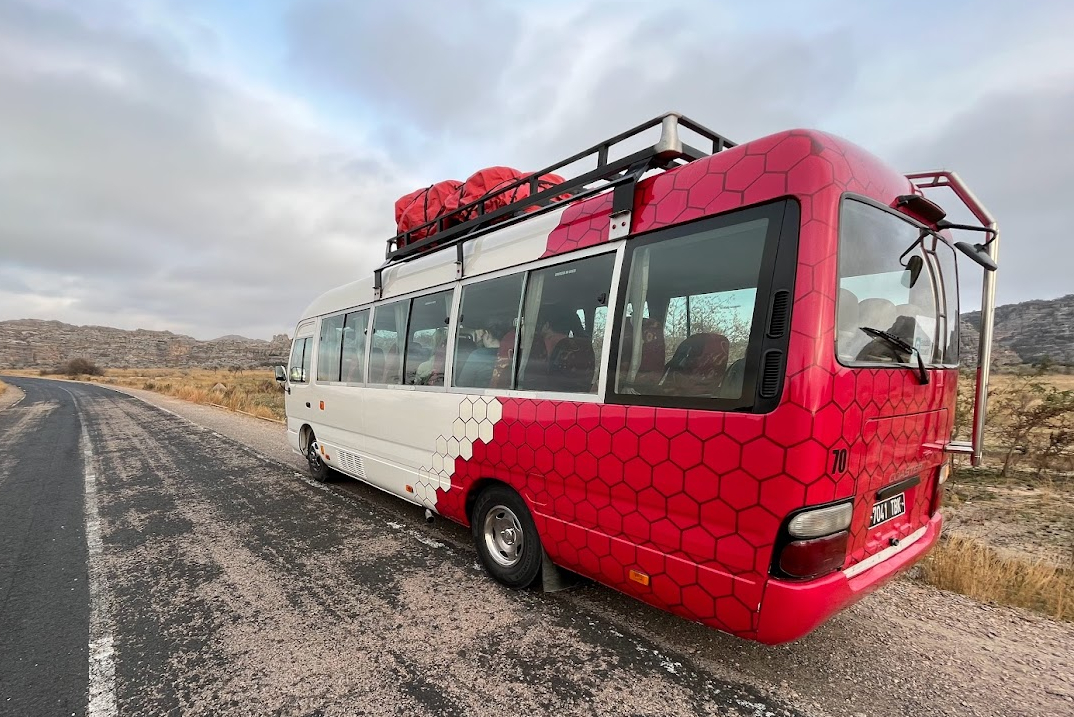
Travel is mainly by small private bus. Road conditions are far worse than in Europe and North America and you should expect many narrow, winding and uneven sections. Many of the roads away from the population centers and main routes are unpaved dirt roads which can be very bumpy. There are several days where the drives are long, with a maximum drive time of approximately 11 hours, but we make plenty of stops along the way.
There is one internal flight: from Tulear to Tana. There is also a round-trip boat transfer between Tulear and Anakao and a 4×4 transfer to Tsimanampetsotsa National Park. We use 4×4 vehicles on this section of the trip as the road is a dirt road and can be a little uneven at times (though the surrounding landscape and destination more than make up for it).
Weather & Seasonality
Madagascar has a tropical climate with two seasons: rainy and dry. The driest season extends from April to October. It can be cold on the central plateau (including Antananarivo) in the evenings, and in the rainforest areas, so bring warm clothes (fleece and waterproof). There is considerable regional variation but coastal areas will normally be very hot and dry. Expect daytime temperatures in the shade up to 38C (100F) from October to December and up to 30C (86F) during the trips running from April to June and September.
Joining Instructions
Key information
Start hotel: Hotel Belvedere, Antananarivo
Recommended arrival time: You can arrive at any time today. There will be a welcome briefing in the evening, but if you miss it the leader will update you separately
Getting to the start hotel
Exodus provides free arrival transfers to the start hotel from the airport for all customers. If you would like further information on joining this trip, please speak to your sales representative.
Catching your return flight
Exodus provides free departure transfers for all customers from the end hotel.
Please note, unless specified otherwise, the transfers will be to the start (or pre-tour) hotel and from the end (or post-tour) hotel and will be on the date on which the tour starts/ends; transfers to other hotels in the same city and/or on different dates may attract an extra charge. Transfers should be booked with your sales representative at least two weeks before the tour starts.
A day room (available from 14h00 – 20h00) can be requested if required. This is subject to availability at the time of booking.
Full joining instructions including local emergency numbers will be sent to you as part of our Final Joining Instructions. If you do not receive these at least a week before departure, or require them earlier please contact our office or your travel agent.
Location start: Antananarivo
Location end: Antananarivo
Transfer Details
Free transfers
Exodus offers FREE airport arrival and departure transfers on any flight for this trip. Unless specified otherwise, the transfer will be to the Exodus start (or pre-tour) hotel and from the end (or post-tour) hotel; transfers to other hotels in the same city and/or on different dates may attract an extra charge. Transfers may be shared with other Exodus customers on the same flight, or on a flight with similar arrival times. All those taking advantage of the free airport transfers must provide full flight details for both arrival and departure in advance.
Flights
Remember, international flights aren’t automatically included in your trip. If you’d like Exodus to help you find some good options, give us a call on 020 8772 3837.
What To Take
Essential Equipment
- Lightweight clothing, including at least one pair of long trousers (pants) and a long‐sleeved shirt (for protection against mosquitoes and scratchy plants)
- Walking boots or training shoes with good tread
- Rain jacket (all year round)
- Sunscreen
- Sunhat
- Sunglasses
- Water bottle
- Torch (flashlight) for camping, wildlife viewing at night and powercuts
Internal flights in the destination country are subject to a weight limit of 44lb (20kg).
Water included: Plastic bottles are a big issue in many countries where recycling isn’t yet widely available; they often end up in landfill or get burned. Both processes are harmful to the environment and we would like to reduce our impact here. For your trip, we provide an alternative to single-use plastic bottles to reduce the plastic used. This means that safe drinking water will be available throughout; all you need to do is bring a bottle to refill along the way. Please add this to your packing list.
Optional Equipment
- Warm sweater or fleece jacket (nights can be chilly)
- Binoculars
- Camera
- Daysack
- Swimming costume
- Earplugs
- Mosquito repellent
- Walking poles
Please note that tampons are virtually impossible to get hold of in Madagascar.
Due to laws in Madagascar about the dispensing of medicine, the guides are not able to carry any basic medicines should you feel unwell. These include paracetamol, Imodium and aspirin. Although they are available to buy in Madagascar, we advise you to bring them with you from home if you believe you may need them.
Practical Information
Visa
Madagascar
Visa requirements often change and it is your responsibility to obtain any required visas for this trip. Therefore, we recommend that you check with the nearest embassy or consulate of your chosen destination(s), including any countries you may be transiting or transferring through.
Some local governments provide guidance on what visas their citizens need. To help, we’ve gathered a selection of useful links below.
- Australia: www.smartraveller.gov.au/destinations/africa/madagascar
- Canada: www.travel.gc.ca/destinations/madagascar
- United Kingdom: www.gov.uk/foreign-travel-advice/madagascar/entry-requirements
- USA: www.travel.state.gov/content/travel/en/international-travel/International-Travel-Country-Information-Pages/Madagascar.html
Vaccinations and Health
Madagascar
Bilharzia is known to occur in some of the lakes or rivers visited on this itinerary, we therefore advise all to take advice from your guide or leader locally before venturing for a swim.
Local Time
Madagascar's time zone: Indian/Antananarivo (UTC +03:00)
Electricity
Madagascar's electricity: Plug types C (two round pins) and E (two round pins) – 220V, 50Hz

Money
Madagascar's currency: Malagasy ariary (MGA)
ATM Availability
ATM’s are available in Antananarivo, Moramanga (about 28 km far from Andasibe ), Antsirabe, Ambositra, Fianarantsoa, Ambalavao and Tulear on this trip. Please note; due to frequent electricity cuts, ATMs may not always be available in these towns. You cannot rely on credit cards for payment as they are not widely accepted.
US dollar bills earlier than 2003 are not accepted. Malagasy ariary can also not be used at Ravinala International Airport, only euros, US dollars (later than 2003) and credit cards are accepted at the airport.
Extra Expenses & Spending Money
A Visa or Mastercard can be used to obtain local cash at some banks, but we advise you to bring your spending money in euros or US dollars cash as these are easiest to change to local currency. Bills of €100 or US$100 usually get a better rate than bills of 20 or less. British pounds can only be exchanged at banks at the airport, but even there, they are not always accepted. You can bring a maximum of €7,500 or the corresponding amount in another currency without declaring it on arrival. Above that amount, you have to declare it. Please note, you can import and export a maximum of 400,000 ariary. You cannot rely on credit cards for payment as they are rarely accepted and the ATMs do not always work; American Express or Diners cards are also rarely accepted in Madagascar.
All money should be exchanged at the airport on arrival, as the banks in the provincial towns take a long time to process. Also, the exchange rate at the airport is generally better than in the banks in Antananarivo or other cities.
Optional excursions
Antananarivo:
Visit to Lemurs’ Park near Tana:
- 350,000 ariary (US$82) for one person
- 215,000 ariary (US$50) per person for two people
- 175,000 ariary (US$40) per person for three people
- 145,000 ariary (US$34) per person from four people
Visit Tsimbazaza Zoo and Botanical Gardens near Tana:
- 200,000 ariary (US$45) for one person
- 125,000 ariary (US$29) per person for two people
- 105,000 ariary (US$24.50) per person for three people
- 95,000 ariary (US$22) per person from four people
Anakao:
- Scuba diving single dive: Approximately 235,000 ariary (US$54) per person
- Scuba diving night dive: Approximately 330,000 ariary (US$76) per person
- Whale-watching excursion (July to September): Approximately 150,000 ariary (US$35) per person (minimum 3 people )
- Kite surfing: Approximately 235,000 ariary (US$54) per person, per hour
- Surfing: Approximately 280,000 ariary (US$65) per person for three hours
- Stand-up paddleboarding: Approximately 95,000 ariary (US$22) per person, per hour
Tipping
Our local staff are paid fairly for their work. You may feel your leader has performed well and want to show your appreciation of their services. If you would like to tip your leader, we suggest a figure of approximately 22,000 ariary (US$5) per person per day.
It is also courtesy to tip any extra guides/drivers you may have over the course of the trip, though certainly not compulsory. Shortly after arrival, the leader will suggest to the group that they donate a sum of approximately 282,000 ariary (US$65) per person towards a kitty on arrival. This money is then used for tipping local guides, hotel porters, drivers etc and will be distributed by the leader.
Sustainability and Impact
As a certified B Corp, we’re on a mission to improve our social and environmental impact across all our adventures.
We do this through our innovative Thriving Nature, Thriving People plan.
This ‘nature positive’ approach is designed to help nature and communities thrive in harmony through practical solutions, such as reducing carbon and waste on our trips, supporting conservation projects through the Exodus Adventure Travels Foundation, and rewilding 100 square metres for every Exodus traveller.
This trip goes near an area deemed unsafe to visit by the UK government’s Foreign, Commonwealth and Development Office, whose advice we follow when operating our trips. While our itinerary doesn’t go to these areas, you should familiarise yourself with your local government’s advice if you are planning any pre- or post-trip travel. Any independent travel to areas currently against your local government advice is entirely at your own risk and unlikely to be covered by your travel insurance.
Important Information
Your Safe Participation
When booking this trip, you should be confident in your ability to participate in all activities described in these Trip Notes. If you have any doubt about your suitability, please call us and ask to speak to one of the experts on this itinerary.
Although our leaders are well trained to deal with different capabilities, if they have any concerns about someone’s ability to safely take part in an activity, or their impact on other people’s enjoyment, we authorise them to take necessary action which, in some circumstances, may involve asking someone to miss that activity.
By booking this trip you agree to our Booking Conditions which clearly state that our leaders have the authority to do this. In these rare instances we will ensure anyone sitting out is safely provided for and offered alternative options where possible. Refunds will not be provided for activities missed and customers may be liable for additional costs incurred.
Seatbelts
All vehicles used by us should be equipped with working seatbelts, except where approved by us based on the vehicle type or journey. Wherever seatbelts are available, we require our customers to use them for their own safety, even where it may not be a legal requirement.
How to Book
Speak to our friendly team of experts to plan your adventure:
- Check availability: our website shows real-time availability or contact our team by phone, email or live chat.
- Hold a space: You can provisionally hold a space to give you time to finalise your travel plans.
- Confirm your booking: Payment of a deposit will complete your booking and secure your place on the trip.
After booking
You will receive a confirmation document and invoice, which includes extra information and guidance about your travel arrangements. Our dedicated Customer Operations team will help you with any pre-travel questions or arrangements and can easily add extensions or extra accommodation to your booking. Final Joining Instructions will usually be sent out two to three weeks prior to departure.
Adding transfers to your booking
If you have arranged your own flights and would like to add transfers to your booking, please provide your arrival and departure details to our Customer Operations team around four to six weeks before departure.
- Where free transfers are included, they are available for any flight but can only be added to your booking once we have received your flight schedule.
- Where group arrival and departure transfers are available, these operate at fixed times. You will need to arrive in time to meet the scheduled transfer. If the timings don’t align with your travel plans, our team can arrange private transfers once they receive your flight schedule.
Trip Note validity
Trip notes may be updated after booking; if any updates significantly impact the inclusions or itinerary you will be advised in writing. A link to the most up-to-date Trip Notes will be sent out with your Final Joining Instructions before departure.
The information in these Trip Notes is given in good faith. All holidays can be subject to unexpected changes, and occasionally it may not be possible to follow the itinerary as planned. In these circumstances we will make the best-possible alternative arrangements that maintain the integrity of the original itinerary.

